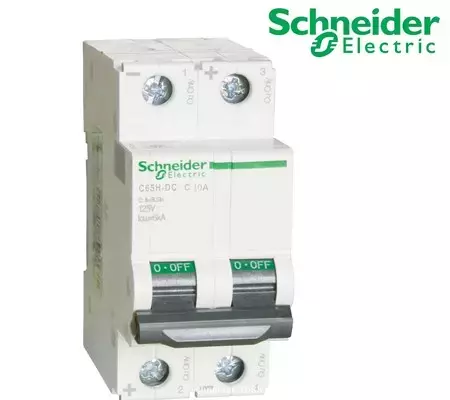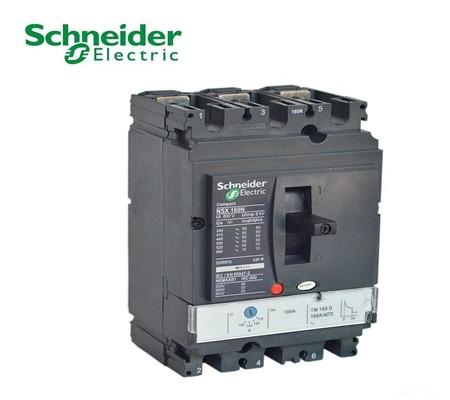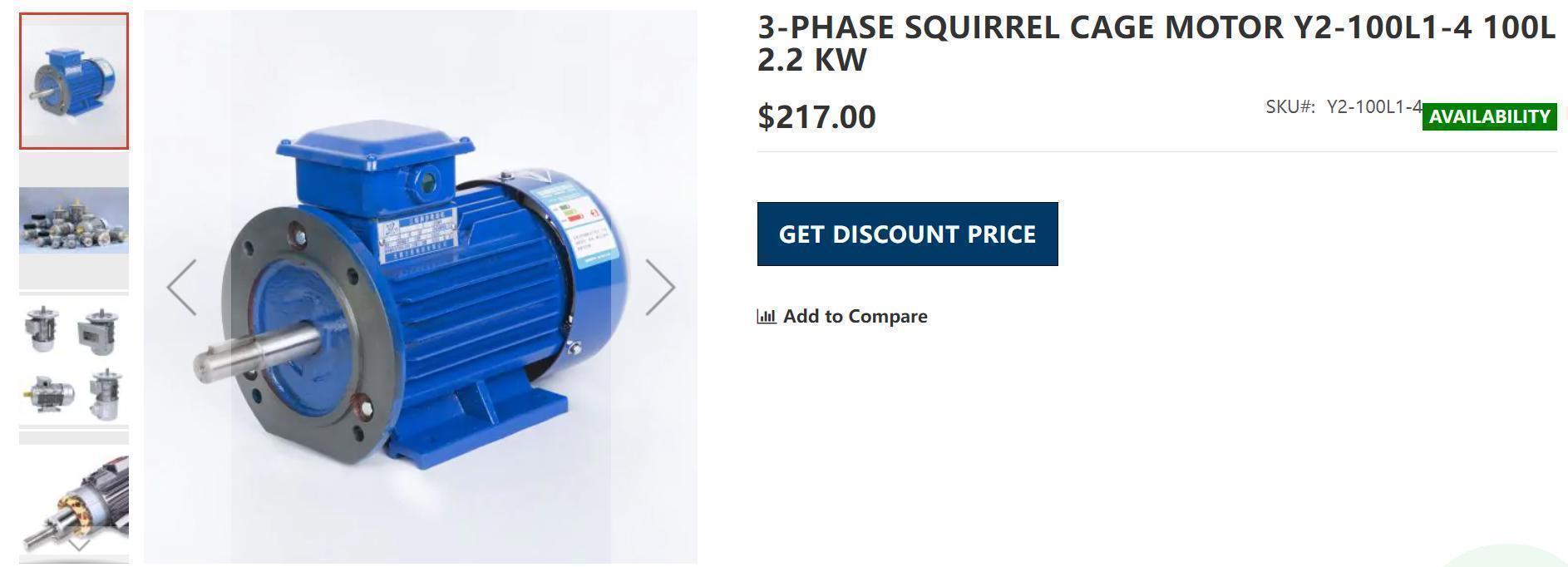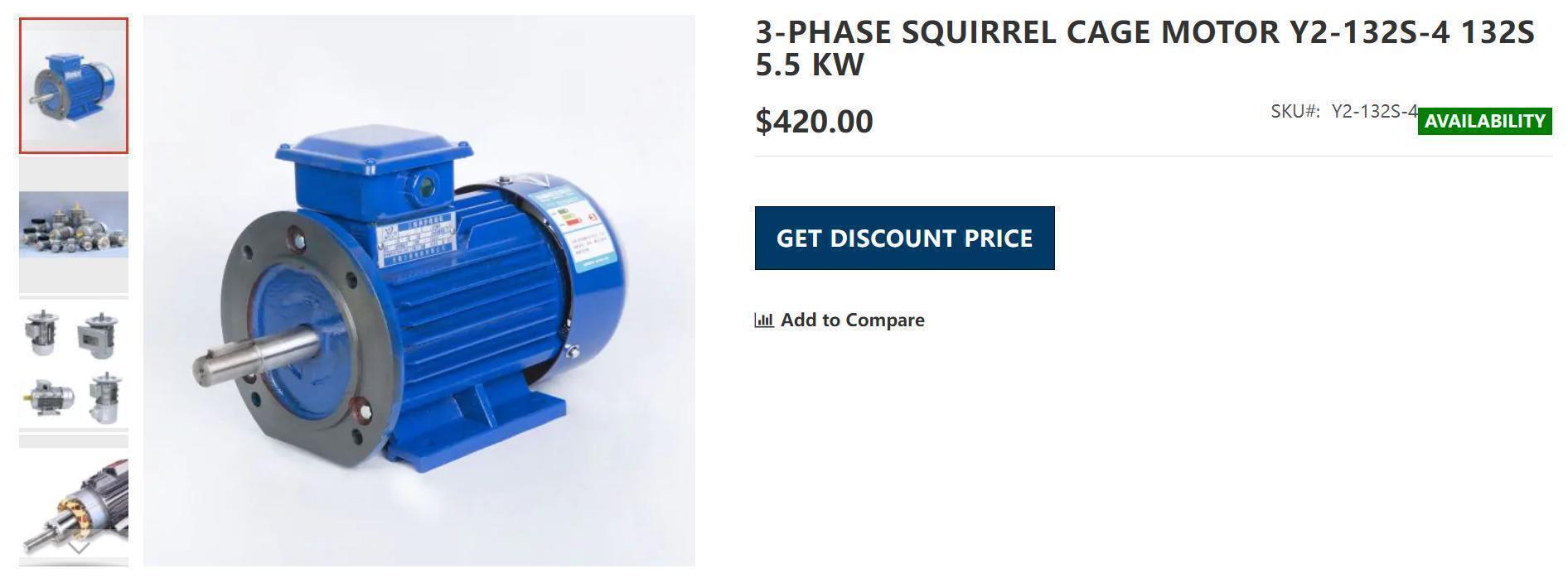Schneider Electric is a switching device capable of closing, carrying and breaking the current under normal loop conditions, and closing, carrying and breaking the current under abnormal loop conditions (including short circuit conditions) within a specified time. Mainly to provide customers around the world with comprehensive solutions, a full range of products and components and thoughtful services.
English name: circuit-breaker; circuit breaker
Definition 1: A switching device capable of closing, carrying, and breaking the current under normal loop conditions, and capable of closing, carrying, and breaking the current under abnormal loop conditions (including short-circuit conditions) within a specified time. Subjects: electricity (first-level discipline); substation (second-level discipline)
Definition 2: Electrical appliances used to cut off or close the working current or fault current in high-voltage circuits.
Circuit breakers are divided into high-voltage circuit breakers and low-voltage circuit breakers according to their scope of use. The division of high- and low-voltage boundaries is relatively vague. Generally, more than 3kV is called high-voltage electrical appliances. Low-voltage circuit breakers are also known as automatic switches, commonly known as "air switches", which also refer to low-voltage circuit breakers. It is an electrical appliance that has both manual switching and automatic protection against voltage loss, undervoltage, overload, and short circuit. It can be used to distribute electrical energy, start asynchronous motors infrequently, and protect power lines and motors. When they have serious overload or short circuit and undervoltage faults, they can automatically cut off the circuit. Its function is equivalent to fuse switches and Overheating relay and other combinations. In addition, it is generally not necessary to change parts after breaking the fault current, which has been widely used.
Most of Schneider's motor circuit breakers should have a certain understanding of the TeSys GV2 and GV3 series, and a new member of this series has joined the motor circuit breaker named GV4 in the model series. In simple terms, it is in the overall structure It becomes compact and sturdy. The highest current can reach 115A and the breaking capacity is 100kA. It can provide three protection measures: magnetic protection, electronic thermal magnetic protection and electronic thermal magnetic protection with high-level protection and alarm function specially designed for demanding applications. .

The following is the product model and its introduction:
Schneider Motor Circuit Breaker GV4 is equipped with unique Everlink power wiring, and can also be equipped with a variety of accessories, mainly including: auxiliary devices (1 OF, 1 SD, 1 coil MN or MX) Then there is the rotary handle (standard type, front / side extension type) and alarm and fault judgment module.
Schneider motor circuit breakers provide three types of protection:
1. Magnetic protection GV4L model: used with thermal overload relay or driver.
2. Thermal-magnetic protection GV4P model: The electronic protection has a wide setting range and adjustable double overload levels (10 and 20).
3. Multifunctional motor protection GV4PEM model: GV4P has adjustable protection function, and can be equipped with a side module SDx for alarm and fault judgment.
C65N-K 1P 10A C 230V 6kA, C65N-K 1P 16A C 230V 6kA, C65N-K 1P 20A C 230V 6kA, DPN-K 1P+N 10A C 230V 4.5kA, DPN-K 1P+N 16A C 230V 4.5kA, DPN-K 1P+N 20A C 230V 4.5kA, NC100H 1P C63A, NC100H 2P C100A, NC100H 1P D100A, NC125H 1P C125A
RCCB,EASY 9 ,3P,16A Vigi 30Ma EA9RN3C1630C
RCCB,EASY 9 ,2P,16A Vigi 30Ma EA9RN2C1630C
MCCB,4P,4D P with MIC 2.3 400A NSX400N 4P
MCCB,4P,4D P with MIC 2.3 630A NSX630N
,MCCB,4P,3D TM160D NSX160N 160A
MCCB,4P,4D TM80D NSX100N 80A
,MCCB,4P,4D TM63D NSX100N 63A
MCB,4P,IOF,IC65H,C2A,400V AC IC65HC2A
MCCB,3P 80A,with trip unit complete NSX80H-MA
MCCB,Merlin gerin,ADX 32894 NSX400/630F
MCCB,NSX400/630S/L240/415V LV432693
MCCB,125A,3P,400-415V EZD160E
MCCB,60A,3P,400-415V EZD100E
MCB, 4 pole, C120H, C100, GB10963.1 C120H /C100
RCBO, iDPNa Vigi 4500, 1P+N Curve C, Rating 6, sensitivity 30 mA A9D34606
RCBO, iDPNa Vigi 4500, 1P+N Curve C, Rating 10, sensitivity 30 mA A9D34610
RCBO, iDPNa Vigi 4500, 1P+N Curve C, Rating 20,sensitivity 30 mA A9D34620
RCBO, iDPNa Vigi 4500, 1P+N Curve C, Rating 25,sensitivity 30 mA A9D34625
RCBO, iDPNa Vigi 4500, 1P+N Curve C, Rating 32, sensitivity A9D34632
RCBO, iDPNa Vigi 4500, 1P+N Curve C, Rating 40,sensitivity 30 mA A9D34640
Ground fault protector, 4P,25A, 30mA, 230.400V 60989
Ground fault protector, 4P, 40A, 30mA, 230.400V 60992
Ground fault protector, 4P, 63A, 30mA, 230.400V 60995
Ground fault protector, 4P, 100A, 30mA, 230.400V 60999
RCCB, VIGI IC60 ADD-ON RESIDUAL CURRENT DEVICES, 2P, RATING: 40A, 30MA A9V61240
RCCB, VIGI IC60 ADD-ON RESIDUAL CURRENT DEVICES, 2P, RATING: 63A, 30MA A9V61263
RCCB, VIGI IC60 ADD-ON RESIDUAL CURRENT DEVICES, 3P, RATING: 25A, 30MA A9V61325
RCCB, VIGI IC60 ADD-ON RESIDUAL CURRENT DEVICES, 3P, RATING: 40A, 30MA A9V61340
RCCB, VIGI IC60 ADD-ON RESIDUAL CURRENT DEVICES, 3P, RATING: 63A, 30MA A9V61363
RCCB, IC60H CIRCUIT BREAKER, 2POLE, IN: 40, C, 220/240, AC50/60HZ A9F54240
RCCB, IC60H CIRCUIT BREAKER, 3 POLE, IN: 25, C, 415V, AC50/60HZ A9F54332
IC60H CIRCUIT BREAKER, 4 POLE, IN: 63, C, 440V, AC50/60HZ A9F54463
RCD,Block,Add on RCD block , rating 25A, 2 P, 30mA, type AC VIGI XC60/ A9N26581
MCB, 2P, C20A, 10KA, 240-415V XC60 20A
MCB, 2P, C25A, 10KA, 240-415V XC60 25A
Schneider Circuit Breaker Models:
1.Miniature circuit breaker
AcTI9 (replaces M9): IC65, C65 small DC circuit breaker, C60, IDPN, C120, NG125, DPN, INT125 series isolation switch.
IC65 is an upgraded product of C65, and IDPN is an upgraded replacement product of DPN.
E9 (Easy9): EA9AN, EA9AH, EA9A45, EA9A65, EA9A47, EA9A67, EA9D isolation switches (closed, isolated).
Osmart series: C32N, C65H, K series.

Parameters of the circuit breaker:
Rated operating voltage (Ue): This is the voltage at which the circuit breaker operates under normal (uninterrupted) conditions.
Rated current (In): The maximum current that the circuit breaker equipped with a special overcurrent trip relay can withstand under the ambient temperature specified by the manufacturer will not exceed the temperature limit specified by the current bearing component.
Short-circuit relay trip current setting value (Im): The short-circuit trip relay (instantaneous or short delay) is used to quickly trip the circuit breaker when a high fault current value occurs, and its trip limit Im.
Rated short-circuit breaking capacity (Icu or Icn): The rated short-circuit breaking current of the circuit breaker is the highest (expected) current value that the circuit breaker can break without being damaged. The current value provided in the standard is the root mean square value of the AC component of the fault current. When calculating the standard value, the DC transient component (which always appears in the worst case short circuit) is assumed to be zero. Industrial circuit breaker ratings (Icu) and household circuit breaker ratings (Icn) are usually given in kA rms.
Short-circuit breaking capacity (Ics): The rated breaking capacity of the circuit breaker is divided into two types: rated limit short-circuit breaking capacity and rated operating short-circuit breaking capacity.
The Schneider Electric Circuit Breaker GV4 is standard equipped with a two-hole EverLink power connector with bare copper wire creep compensation function, which can obtain accurate and durable tightening torque to avoid cable creep. The motor circuit breaker can also provide a busbar connector or a cable connection with a ring terminal. Regardless of the connector is a field interchangeable component, at the same time one of the two can be removed. In addition, to tighten the power connection with the correct torque, especially on site, a torque-limiting screw may be required.

In order to make the main circuit breaker in good working condition, it is necessary to strengthen maintenance management.
1. Keeping the air moist or dirty and the pipes dirty may cause the following consequences:
(1) Moist gas decomposes into mixed gas such as hydrogen and oxygen under the action of arc, which destroys the insulation between the fractures after the main contact is broken. It is difficult to re-ignite the arc or re-ignite the arc. In severe cases, the arc-extinguishing chamber will burst.
(2) The insulation strength of the supporting porcelain bottle and the arc extinguishing chamber is reduced, causing creeping discharge.
(3) Foreign objects such as paint skin, rust residue in the pipeline may block the air port, causing the main circuit breaker to malfunction and causing jamming.
(4) If foreign matter enters the arc extinguishing chamber, it may cause poor contact of the main contact, which will cause the non-linear resistance to be burned due to long-term energization. In severe cases, the non-linear resistance porcelain bottle will burst.
Therefore, an oil-water separator is installed on the air inlet pipe of the main circuit breaker storage cylinder, and there is a water drain valve in the lower part. During use and maintenance, water should be drained regularly to keep the air circuit clean.
2. Replace rubber parts regularly
The main circuit breaker is a kind of complicated pneumatic electrical equipment. Each component has high requirements for sealing performance. To ensure good sealing performance, the rubber parts should be replaced regularly.
3. Regular inspection of major components
Every major part should be checked regularly to maintain good technical condition.
(1) Arc-extinguishing chamber
Regularly detect the state of the main contact overtravel and the moving contact recovery spring. Due to the frequent opening and closing of the moving and static contacts, they will wear due to mutual friction, resulting in reduced overtravel and reduced contact pressure. When the overtravel is reduced to a certain extent, the moving and static contacts must be replaced. When the deformation of the moving contact restoration spring exceeds a certain limit, it must be replaced in time.
(2) Non-linear resistance
Keep the internal resistance of non-linear resistance porcelain bottles clean and well sealed, and replace the desiccant in non-linear resistance porcelain bottles regularly. Detect the resistance value of the non-linear resistor. If the resistance value changes beyond a certain limit, it must be replaced in time.
(3) the main valve
Regularly check the size of the fit between the piston and the valve body. If the size does not meet the requirements, it should be replaced in time.
(4) Transmission air cylinder
Properly adjust the buffer of the transmission air cylinder to ensure that the disconnector works well. Regularly check the accuracy of the fit between the piston and the cylinder, and ensure its good performance by trimming or replacing parts.
(5) Ventilation plug door
The packing in the plug must be replaced regularly, and the ventilation of the plug should be checked to adjust it to within the allowable range.

Circuit breaker working principle:
Circuit breakers are generally composed of contact systems, arc extinguishing systems, operating mechanisms, trip units, and housings.
When a short circuit occurs, the magnetic field generated by a large current (usually 10 to 12 times) overcomes the reaction force spring, the tripper pulls the operating mechanism, and the switch momentarily trips. When the overload occurs, the current becomes larger, the heat generation is intensified, and the bimetal is deformed to a certain extent to push the mechanism to move (the larger the current, the shorter the operation time).
There are electronic types, which use current transformers to collect the current of each phase and compare it with the set value. When the current is abnormal, the microprocessor sends a signal to cause the electronic release to drive the operating mechanism.
The function of the circuit breaker is to cut off and switch on the load circuit and cut off the fault circuit to prevent the accident from expanding and ensure safe operation. High voltage circuit breakers need to open 1500V and 1500-2000A arcs. These arcs can be extended to 2m and continue to burn without extinguishing. Therefore, arc extinguishing is a problem that must be solved for high voltage circuit breakers.
The principle of arc blowing and quenching is mainly to cool the arc and weaken the heat release. On the other hand, by blowing the arc to lengthen the arc, it strengthens the recombination and diffusion of charged particles, and at the same time blows the charged particles in the arc gap to quickly restore the dielectric strength of the medium.
Low-voltage circuit breakers are also known as automatic air switches, which can be used to switch on and off load circuits, and can also be used to control motors that start infrequently. Its function is equivalent to the sum of the functions of some or all electrical appliances such as gate knife switches, overcurrent relays, voltage loss relays, thermal relays and leakage protectors. It is an important protective electrical device in low-voltage distribution networks.
Low-voltage circuit breakers have a variety of protection functions (overload, short circuit, undervoltage protection, etc.), adjustable action values, high breaking capacity, convenient operation, safety and other advantages, so they are currently widely used. Structure and working principle The low-voltage circuit breaker is composed of operating mechanism, contacts, protection devices (various trip units), arc extinguishing system, etc.

The main contacts of the low-voltage circuit breaker are closed manually or electrically. After the main contact is closed, the free trip mechanism locks the main contact in the closed position. The coil of the overcurrent release and the thermal element of the thermal release are connected in series with the main circuit, and the coil of the undervoltage release and the power supply are connected in parallel. When the circuit is short-circuited or severely overloaded, the armature of the overcurrent tripper is engaged to make the free trip mechanism actuate, and the main contact opens the main circuit. When the circuit is overloaded, the thermal element of the thermal release heats up and bends the bimetal, pushing the free trip mechanism to operate. When the circuit is under voltage, the armature of the under voltage release is released. The free trip mechanism is also activated. Shunt release is used for long-distance control. During normal operation, its coil is powered off. When distance control is needed, press the start button to energize the coil, and the armature drives the free trip mechanism to make the main Click to disconnect.
































